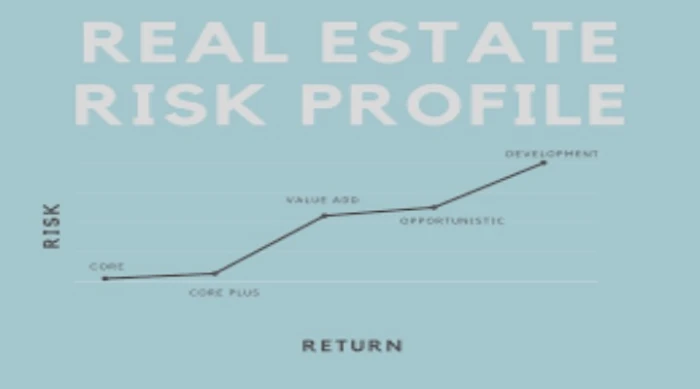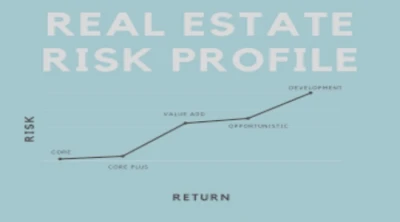How to Mitigate the Risks Involved in Real Estate Investing?
Whether you buy a house, a business building, or a factory, knowing how to protect your investment and make it last is essential.

Investing in real estate can be a great way to make money, but it has its dangers. Whether you buy a house, a business building, or a factory, knowing how to protect your investment and make it last is essential. If you do it right, you can make a lot of money. This article explores various strategies and considerations related to critical topics such as risk mitigation strategies, developing a risk management plan, real estate finance risks, construction project risks, and third-party risk management and provide examples of effective risk mitigation.
Risk Mitigation Strategies in Real Estate Investing
Risk mitigation strategies are the actions and steps taken to reduce the likelihood and impact of potential risks in real estate investing. The primary goal of these strategies is to protect your investment from unforeseen circumstances that could lead to financial loss or project failure.
Diversification
Having different kinds of properties in various places is less risky. If one place has problems, the others might be okay. If one investment underperforms, others may perform well, balancing the overall risk.
Due Diligence
Before you put your money into something, make sure you know all about it. Look into it carefully and think about it from all angles. This includes studying the local market, understanding the property's history, assessing future development plans in the area, and evaluating the financial health of potential tenants or buyers.
Insurance
It is vital to secure appropriate insurance coverage for your properties. Insurance can protect against various risks, including natural disasters, accidents, liability claims, and vacancy losses. Ensure that your insurance policy is tailored to cover the specific risks associated with each property.
Legal Protections
Engage legal professionals to review contracts, property titles, and other documents to ensure no hidden liabilities or encumbrances. Understanding zoning laws, tenant rights, and other legal considerations can prevent costly disputes.
Exit Strategy
Before investing money, plan how to get it back if things don't work out. This could involve selling the property, refinancing, or repurposing the asset. A well-defined exit plan allows you to minimize losses and capitalize on opportunities when market conditions change.
Developing a Risk Management Plan
A risk management plan is like a guidebook for your real estate investment. It helps you identify potential problems, determine their size, and make a plan to prevent them from causing trouble. A good plan like this is essential to avoid problems before they start.
Risk Identification
The first step in planning to deal with problems is to figure out what those problems might be. These could range from economic downturns, changes in government regulations, and environmental hazards to unexpected maintenance costs or tenant defaults.
Risk Assessment
Once risks are identified, assess their likelihood and potential impact on your investment. This involves qualitative and quantitative analysis, considering market conditions, historical data, and expert opinions.
Risk Prioritization
Not all risks are the same. Some risks can hurt your investments more than others. Determine which risks are most likely to happen and how bad they could be. This will help you protect your assets where they need it most.
Mitigation Strategies
Develop specific mitigation strategies for each identified risk. These could include implementing stricter tenant screening processes, increasing property inspections, or diversifying your investment portfolio.
Monitoring and Review
Risk management is always necessary. Oversee your investments for new problems. Check your risk management plan often. This will help you change your strategies when the market changes or you learn new things.
Finance Risks Associated with Real Estate
Real estate finance risks are among the most significant challenges faced by investors. These risks are primarily related to financing arrangements for acquiring and developing properties.
Interest Rate Risk
The cost of borrowing money can change significantly when interest rates increase or decrease. Rising interest rates increase mortgage payments and reduce the profitability of an investment. Consider locking in fixed-rate mortgages or refinancing when interest rates are low to mitigate this risk.
Leverage Risk
Too much leverage (borrowed money) can amplify returns and increase risk. In a market downturn, high leverage can lead to negative equity, where the property's value is less than the outstanding loan. Maintaining a conservative Loan-to-Value (LTV) ratio and having sufficient cash reserves can help manage leverage risk.
Liquidity Risk
Real estate can be challenging to sell quickly. Finding a buyer and getting the money from it can take a while. This can be problematic if you need to liquidate assets quickly. To mitigate liquidity risk, consider maintaining a portion of your portfolio in more liquid investments, such as real estate investment trusts (REITs).
Credit Risk
This involves the possibility that borrowers or tenants may default on their financial obligations. Credit risk can be mitigated by performing rigorous credit checks on tenants and maintaining a diversified tenant base to reduce reliance on any single source of income.
Market Risk
Market risk is the danger that your money will lose value because of problems in the market. For example, if the economy is bad or people don't want to buy houses, your investment might lose money. To deal with this risk, you must know what's going on with the market and be ready to change how you invest if things change.
Managing the risks also means not to sign any deal that involves high risk. For example, you can reduce the risk involved in mortgage deals by using a Mortgage Refinance Calculator, that not only helps you to get started but also prevents you from bad debts.
Risks Associated with Construction Project
Construction project risks are significant for real estate investors involved in development or renovation projects. These risks can lead to cost overruns, project delays, and even project failure if not appropriately managed.
Cost Overruns
One of the most common risks in construction projects is the potential for costs to exceed the initial budget. This can occur due to unexpected expenses, material price increases, or design changes. To mitigate this risk, establish a detailed budget with contingencies and work with experienced contractors who can provide accurate cost estimates.
Project Delays
Construction delays can result from various factors, including weather conditions, labor shortages, or regulatory hurdles. To manage this risk, develop a realistic project timeline with built-in buffers and maintain close communication with all stakeholders to address issues promptly.
Quality Control
Poor construction quality can lead to long-term maintenance issues and reduce the property's value. Implementing a rigorous quality control during construction, including regular inspections and hiring qualified professionals, is crucial to ensuring the project meets the required standards.
Regulatory Risk
When people build something new, they have to follow a lot of rules. These rules help keep everyone safe and protect the environment. If these rules are not followed, problems can occur, such as fines, legal fights, or even stopping the project. Engage legal counsel to navigate the regulatory landscape and ensure compliance.
Supply Chain Disruptions
Construction projects rely on a steady supply of materials and labor. Disruptions in the supply chain can delay projects and increase costs. To mitigate this risk, diversify your suppliers and maintain strong relationships with key vendors to ensure timely materials delivery.
Third-Party Risk Management
Third-Party risk management involves identifying, assessing, and mitigating risks associated with the external parties involved in a real estate investment, such as contractors, suppliers, property managers, and tenants.
Contractor and Supplier Risk
The performance of contractors and suppliers can significantly impact the success of a real estate project. Conduct thorough due diligence before engaging any third party to mitigate this risk. Check references, review past projects, and ensure they have the qualifications and insurance coverage.
Property Management Risk
If you hire a company to manage your property, how well they do will affect how much money you make. Choose a good company with a good reputation and clear records. Check how they're doing often and talk to them openly about any problems.
Tenant Risk
The people who rent your property are significant. If they can pay the rent and take care of the place, you'll make more money, and your property will be worth more. To ensure you rent to good people, check their credit, see if they have a job, and ask for references. You can also give them a discount if they rent for a long time to keep them from moving out often.
Legal and Compliance Risk
Engaging third parties introduces legal and compliance risks, particularly concerning contracts and regulatory requirements. To avoid problems, work with lawyers to create clear and robust agreements. Make sure everyone involved follows all the rules and laws that apply.
To ensure the safety of real estate investing, you need to plan carefully, monitor the situation closely, and be ready to change as events occur. By employing effective risk mitigation strategies, developing a comprehensive risk management plan, and addressing specific risks related to finance, construction, and third parties, investors can keep their money safe and make more money by being smart about their investments.
Real Estate, by its nature, involves uncertainty and potential pitfalls. But if we do things correctly, we can deal with these risks. Learning how to stop risks from happening isn't just about saving money; it's about putting yourself in an excellent position to take advantage of good things while trying to prevent bad things. Real estate investors can confidently navigate the market's complexities, securing their investments and achieving long-term financial goals through diversification, due diligence, prudent financial management, and strategic planning.

Investing in real estate can be a great way to make money, but it has its dangers. Whether you buy a house, a business building, or a factory, knowing how to protect your investment and make it last is essential. If you do it right, you can make a lot of money. This article explores various strategies and considerations related to critical topics such as risk mitigation strategies, developing a risk management plan, real estate finance risks, construction project risks, and third-party risk management and provide examples of effective risk mitigation.
Risk Mitigation Strategies in Real Estate Investing
Risk mitigation strategies are the actions and steps taken to reduce the likelihood and impact of potential risks in real estate investing. The primary goal of these strategies is to protect your investment from unforeseen circumstances that could lead to financial loss or project failure.
Diversification
Having different kinds of properties in various places is less risky. If one place has problems, the others might be okay. If one investment underperforms, others may perform well, balancing the overall risk.
Due Diligence
Before you put your money into something, make sure you know all about it. Look into it carefully and think about it from all angles. This includes studying the local market, understanding the property's history, assessing future development plans in the area, and evaluating the financial health of potential tenants or buyers.
Insurance
It is vital to secure appropriate insurance coverage for your properties. Insurance can protect against various risks, including natural disasters, accidents, liability claims, and vacancy losses. Ensure that your insurance policy is tailored to cover the specific risks associated with each property.
Legal Protections
Engage legal professionals to review contracts, property titles, and other documents to ensure no hidden liabilities or encumbrances. Understanding zoning laws, tenant rights, and other legal considerations can prevent costly disputes.
Exit Strategy
Before investing money, plan how to get it back if things don't work out. This could involve selling the property, refinancing, or repurposing the asset. A well-defined exit plan allows you to minimize losses and capitalize on opportunities when market conditions change.
Developing a Risk Management Plan
A risk management plan is like a guidebook for your real estate investment. It helps you identify potential problems, determine their size, and make a plan to prevent them from causing trouble. A good plan like this is essential to avoid problems before they start.
Risk Identification
The first step in planning to deal with problems is to figure out what those problems might be. These could range from economic downturns, changes in government regulations, and environmental hazards to unexpected maintenance costs or tenant defaults.
Risk Assessment
Once risks are identified, assess their likelihood and potential impact on your investment. This involves qualitative and quantitative analysis, considering market conditions, historical data, and expert opinions.
Risk Prioritization
Not all risks are the same. Some risks can hurt your investments more than others. Determine which risks are most likely to happen and how bad they could be. This will help you protect your assets where they need it most.
Mitigation Strategies
Develop specific mitigation strategies for each identified risk. These could include implementing stricter tenant screening processes, increasing property inspections, or diversifying your investment portfolio.
Monitoring and Review
Risk management is always necessary. Oversee your investments for new problems. Check your risk management plan often. This will help you change your strategies when the market changes or you learn new things.
Finance Risks Associated with Real Estate
Real estate finance risks are among the most significant challenges faced by investors. These risks are primarily related to financing arrangements for acquiring and developing properties.
Interest Rate Risk
The cost of borrowing money can change significantly when interest rates increase or decrease. Rising interest rates increase mortgage payments and reduce the profitability of an investment. Consider locking in fixed-rate mortgages or refinancing when interest rates are low to mitigate this risk.
Leverage Risk
Too much leverage (borrowed money) can amplify returns and increase risk. In a market downturn, high leverage can lead to negative equity, where the property's value is less than the outstanding loan. Maintaining a conservative Loan-to-Value (LTV) ratio and having sufficient cash reserves can help manage leverage risk.
Liquidity Risk
Real estate can be challenging to sell quickly. Finding a buyer and getting the money from it can take a while. This can be problematic if you need to liquidate assets quickly. To mitigate liquidity risk, consider maintaining a portion of your portfolio in more liquid investments, such as real estate investment trusts (REITs).
Credit Risk
This involves the possibility that borrowers or tenants may default on their financial obligations. Credit risk can be mitigated by performing rigorous credit checks on tenants and maintaining a diversified tenant base to reduce reliance on any single source of income.
Market Risk
Market risk is the danger that your money will lose value because of problems in the market. For example, if the economy is bad or people don't want to buy houses, your investment might lose money. To deal with this risk, you must know what's going on with the market and be ready to change how you invest if things change.
Managing the risks also means not to sign any deal that involves high risk. For example, you can reduce the risk involved in mortgage deals by using a Mortgage Refinance Calculator, that not only helps you to get started but also prevents you from bad debts.
Risks Associated with Construction Project
Construction project risks are significant for real estate investors involved in development or renovation projects. These risks can lead to cost overruns, project delays, and even project failure if not appropriately managed.
Cost Overruns
One of the most common risks in construction projects is the potential for costs to exceed the initial budget. This can occur due to unexpected expenses, material price increases, or design changes. To mitigate this risk, establish a detailed budget with contingencies and work with experienced contractors who can provide accurate cost estimates.
Project Delays
Construction delays can result from various factors, including weather conditions, labor shortages, or regulatory hurdles. To manage this risk, develop a realistic project timeline with built-in buffers and maintain close communication with all stakeholders to address issues promptly.
Quality Control
Poor construction quality can lead to long-term maintenance issues and reduce the property's value. Implementing a rigorous quality control during construction, including regular inspections and hiring qualified professionals, is crucial to ensuring the project meets the required standards.
Regulatory Risk
When people build something new, they have to follow a lot of rules. These rules help keep everyone safe and protect the environment. If these rules are not followed, problems can occur, such as fines, legal fights, or even stopping the project. Engage legal counsel to navigate the regulatory landscape and ensure compliance.
Supply Chain Disruptions
Construction projects rely on a steady supply of materials and labor. Disruptions in the supply chain can delay projects and increase costs. To mitigate this risk, diversify your suppliers and maintain strong relationships with key vendors to ensure timely materials delivery.
Third-Party Risk Management
Third-Party risk management involves identifying, assessing, and mitigating risks associated with the external parties involved in a real estate investment, such as contractors, suppliers, property managers, and tenants.
Contractor and Supplier Risk
The performance of contractors and suppliers can significantly impact the success of a real estate project. Conduct thorough due diligence before engaging any third party to mitigate this risk. Check references, review past projects, and ensure they have the qualifications and insurance coverage.
Property Management Risk
If you hire a company to manage your property, how well they do will affect how much money you make. Choose a good company with a good reputation and clear records. Check how they're doing often and talk to them openly about any problems.
Tenant Risk
The people who rent your property are significant. If they can pay the rent and take care of the place, you'll make more money, and your property will be worth more. To ensure you rent to good people, check their credit, see if they have a job, and ask for references. You can also give them a discount if they rent for a long time to keep them from moving out often.
Legal and Compliance Risk
Engaging third parties introduces legal and compliance risks, particularly concerning contracts and regulatory requirements. To avoid problems, work with lawyers to create clear and robust agreements. Make sure everyone involved follows all the rules and laws that apply.
To ensure the safety of real estate investing, you need to plan carefully, monitor the situation closely, and be ready to change as events occur. By employing effective risk mitigation strategies, developing a comprehensive risk management plan, and addressing specific risks related to finance, construction, and third parties, investors can keep their money safe and make more money by being smart about their investments.
Real Estate, by its nature, involves uncertainty and potential pitfalls. But if we do things correctly, we can deal with these risks. Learning how to stop risks from happening isn't just about saving money; it's about putting yourself in an excellent position to take advantage of good things while trying to prevent bad things. Real estate investors can confidently navigate the market's complexities, securing their investments and achieving long-term financial goals through diversification, due diligence, prudent financial management, and strategic planning.
Conversation
Latest Blogs
© Blog CoolCalculator, Explore CoolCalculator, your destination for the latest insights, tips, and updates on the world of online calculators. Stay informed and make your calculations smarter with our blog. ,
Designed
by Saad Media Team , Team Lead M.Rizwan Akhtar












